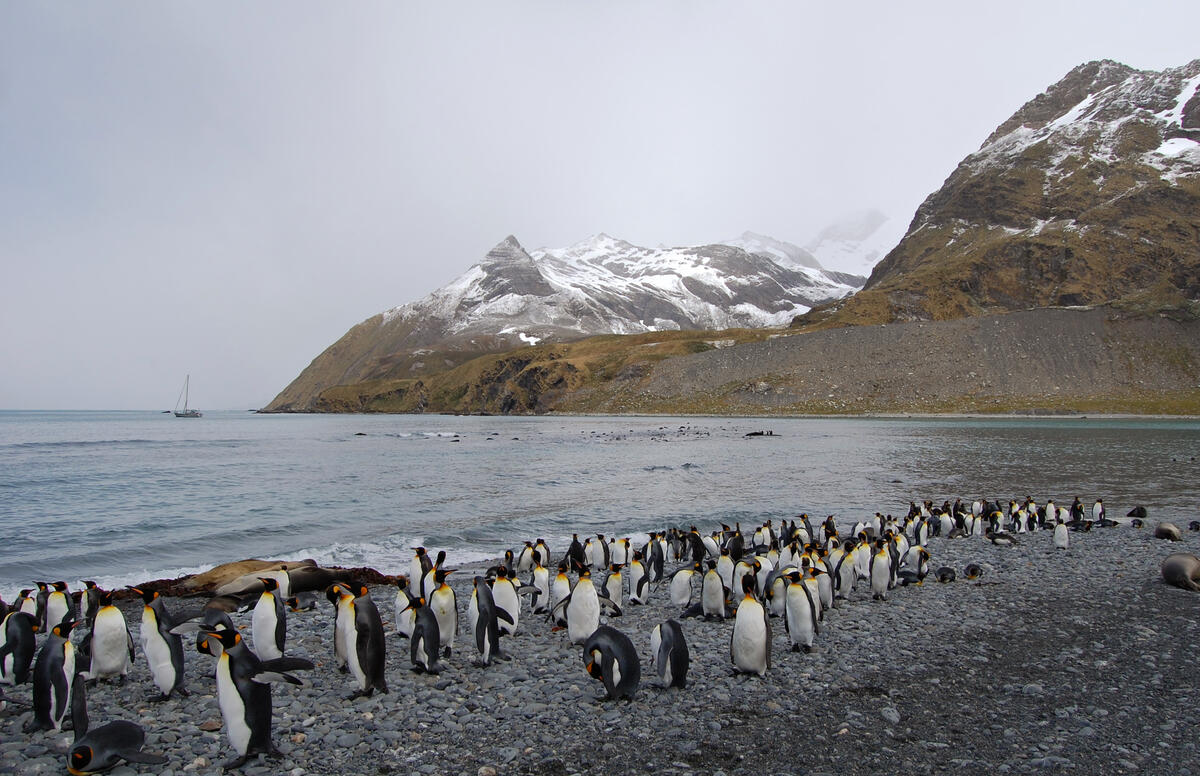Gold Harbour is a small bay on the coast that delineates the eastern extremity of South Georgia. The cliff sides and hill slopes are tinted yellow in the sunlight.
The bay and adjacent beaches and flatlands are a breeding ground for a number of species of interest, most particularly king penguins. Absent in the Antarctic Peninsula, and present only in small numbers in the Falklands, kings were one of the more exciting examples of wildlife to view in South Georgia. In the penguin world only emperors, difficult to find and reach in the deep south of Antarctica, are larger and possibly of even greater interest. Gold Harbour was the first of our destinations with large numbers of birds, the size of the colonies as impressive as the individual animals.
Gold Harbour
From Drygalski at the southern tip of the island, we headed back north. Coastal hopping these areas is feasible and safe in the modern age, particularly with radar. A reading of James Cook’s journal concerning his exploration of South Georgia on HMS Resolution in 1775 will give a feel for doing it the old fashioned way; the Resolution spent countless days clear of the land, standing to, ranging the coast, and only gingerly approaching possible landing sites with her boats to sound out passages in the appropriate conditions. The weather and fog are a constant problem: one in two days looked like this during our trip.
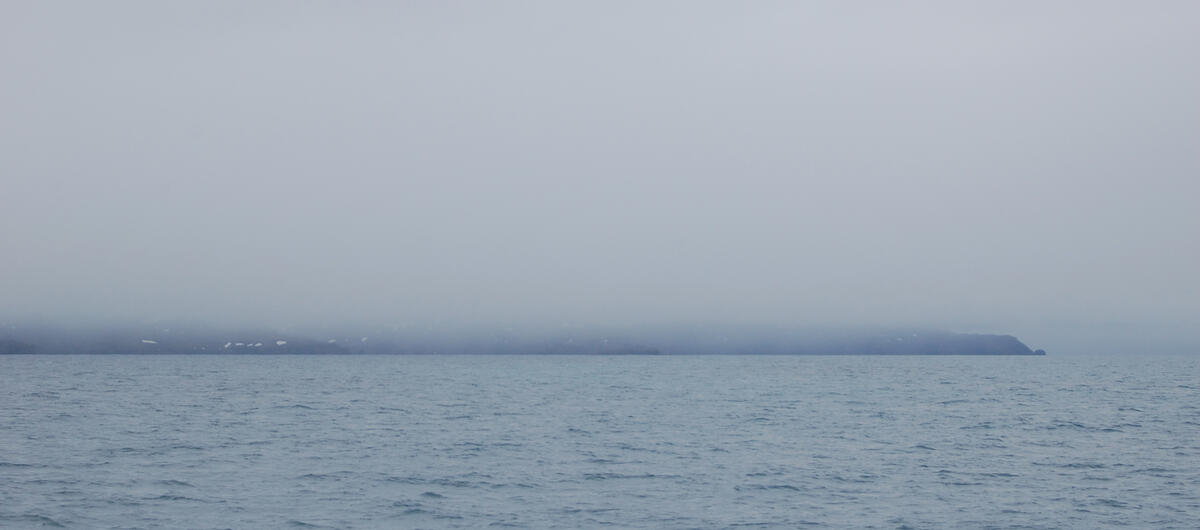
This pair is the epitome of what’s to be found here. Even with the poor light from a leaden sky, the brilliantly saturated yellows and oranges contrast beautifully with the clean white and deep blacks of the rest of their plumage. Getting ashore to say hello to these guys is a priority.
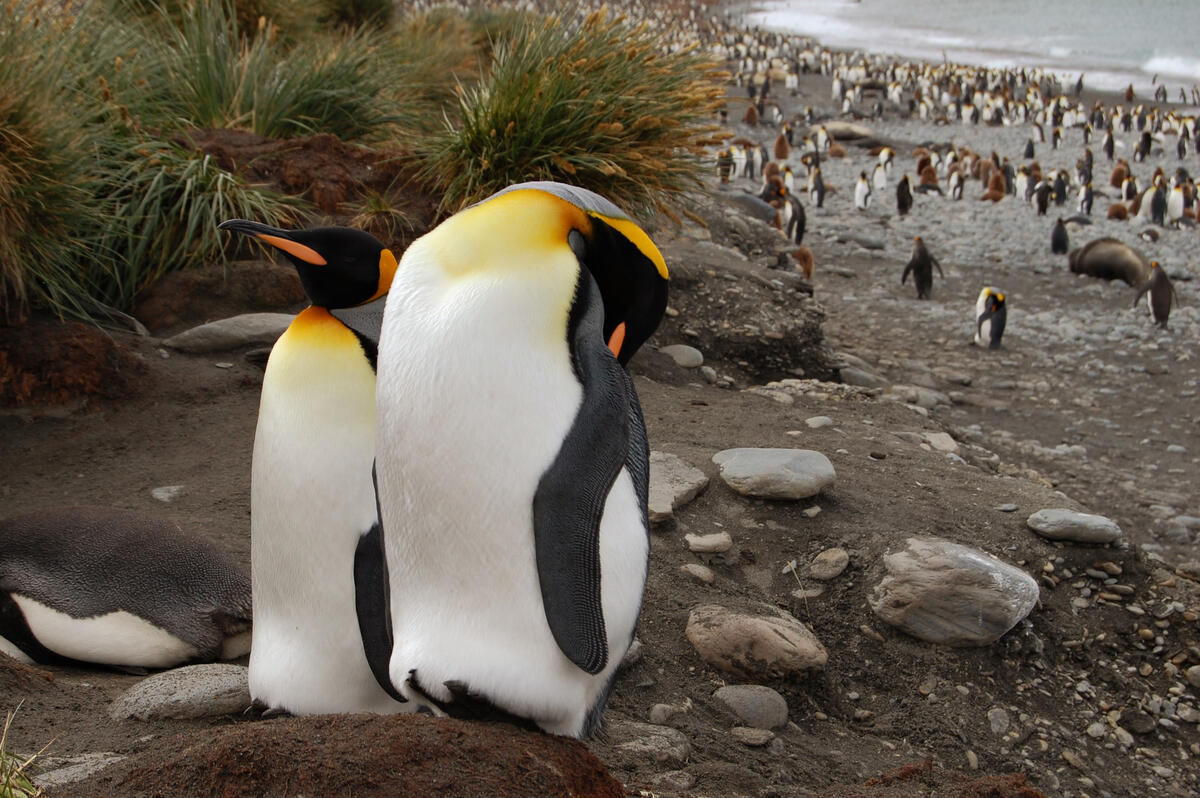
Gold Harbour is not much of one; we were again compelled to anchor Kiwi Roa on the moraine, essentially out at sea with no protection to speak of. The ship is the Pharos, seen earlier docked at King Edward Point.
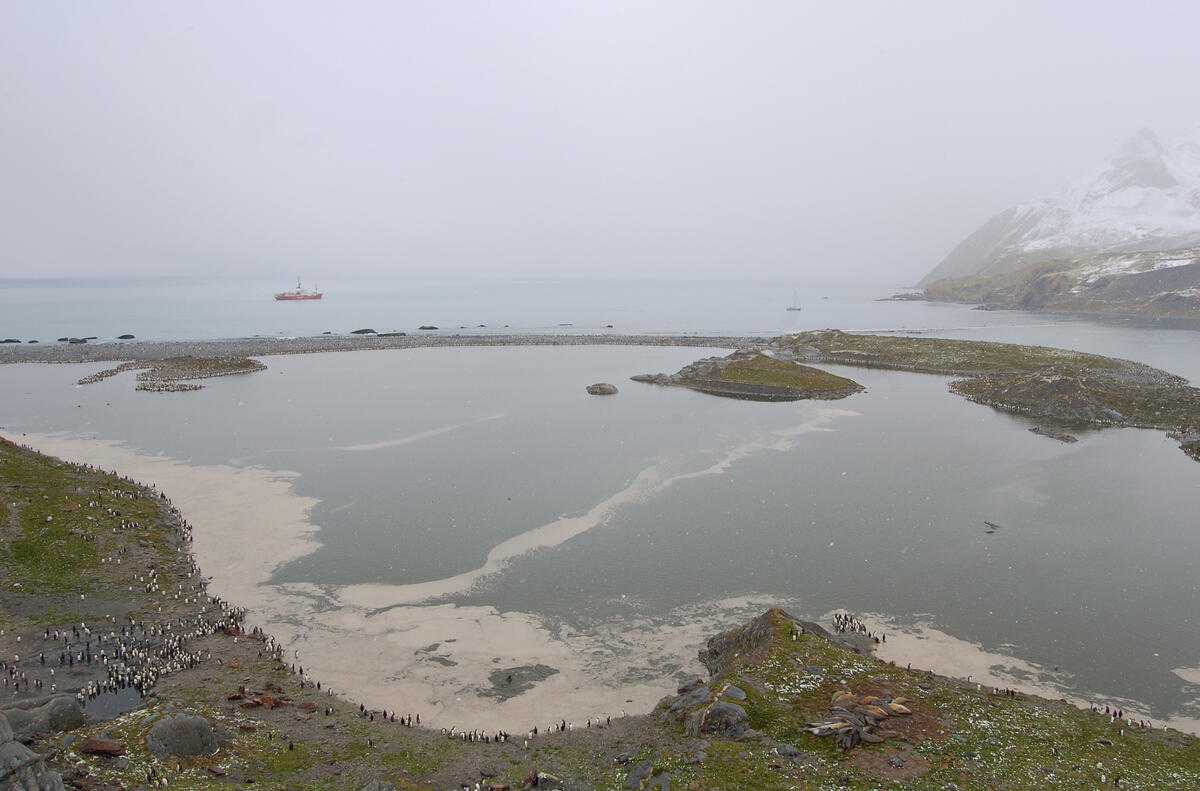
The MV Pharos SG is commissioned by the island government as a fishery patrol vessel. She enforces fisheries licensing and conducts compliance inspections on licensed vessels. About eight months per year are spent deployed at sea around South Georgia, with brief returns to the Falklands to refuel and resupply.
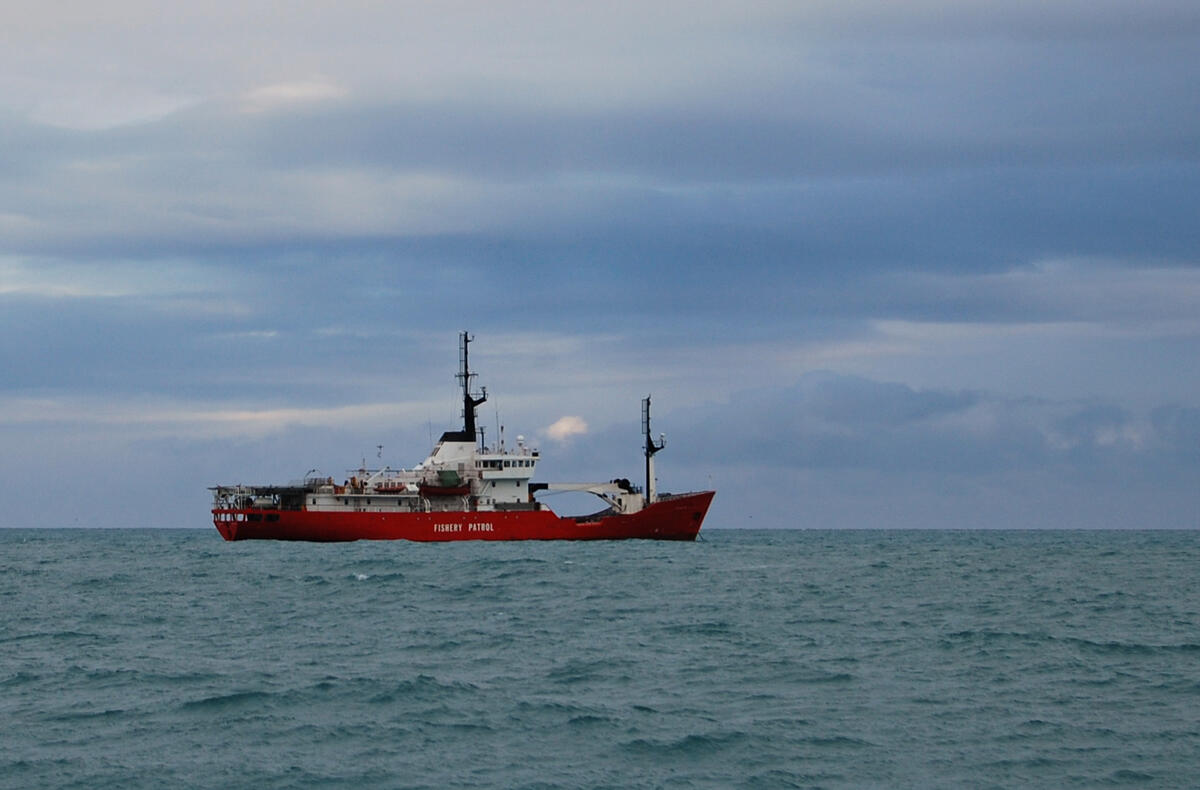
Ashore, the penguins squabble for bits of ground on the dry morraine. Shorelines and islets seem to be premium real estate.
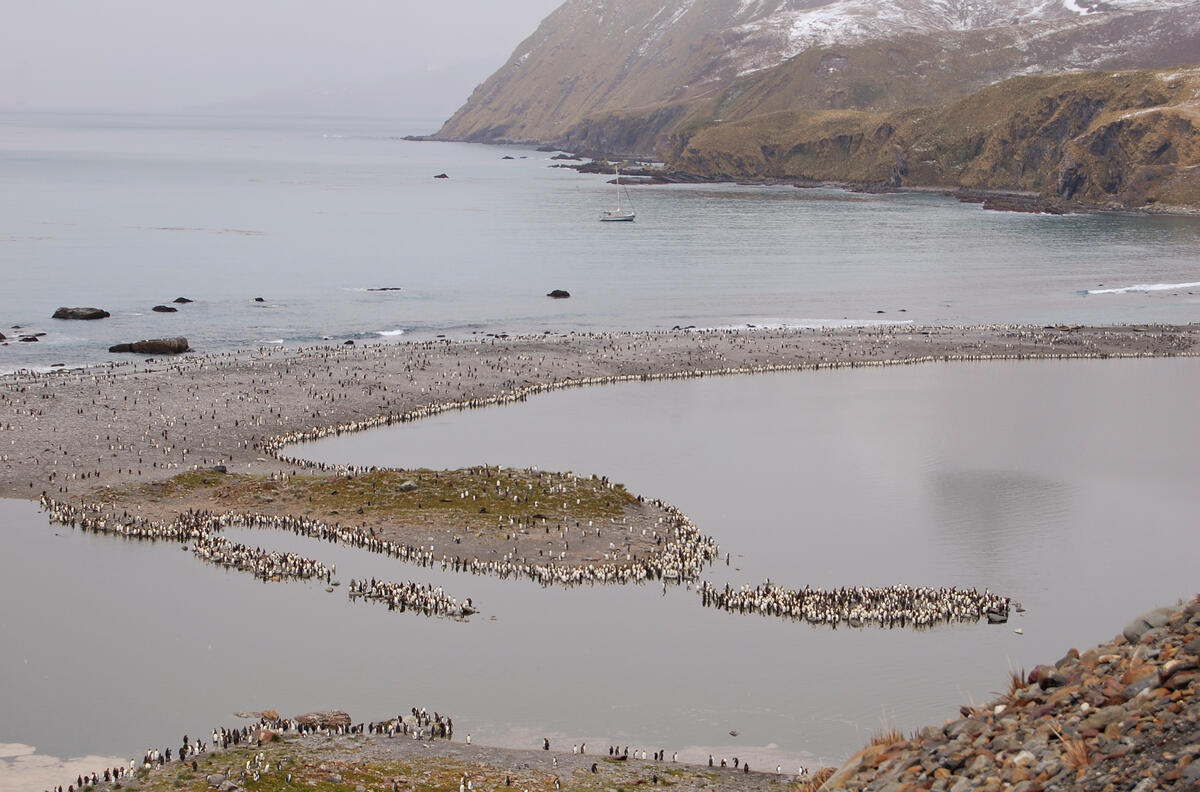
This moraine is created by the glacier at the head of the inlet, which is also responsible for some quite spectacular (and dangerous) calving.
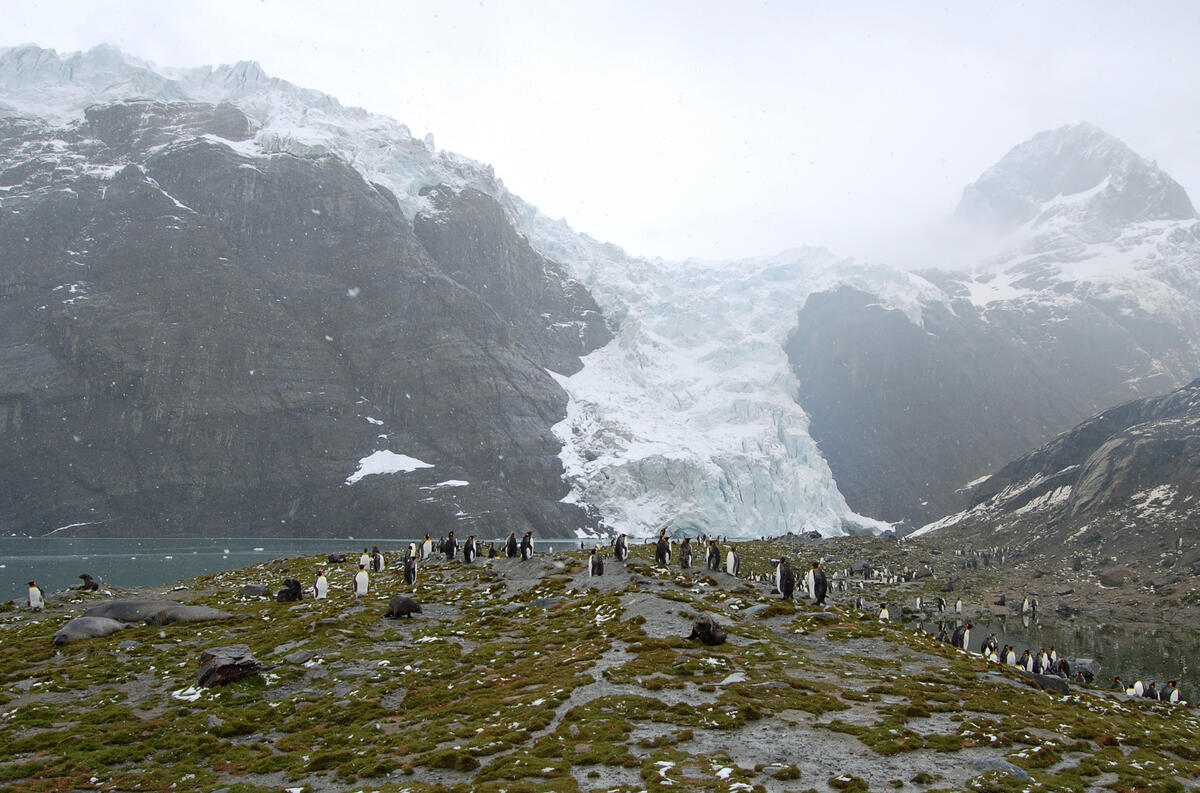
Around the glacial lagoon are sporadic king clusters. Farther along the coast the numbers start to increase.
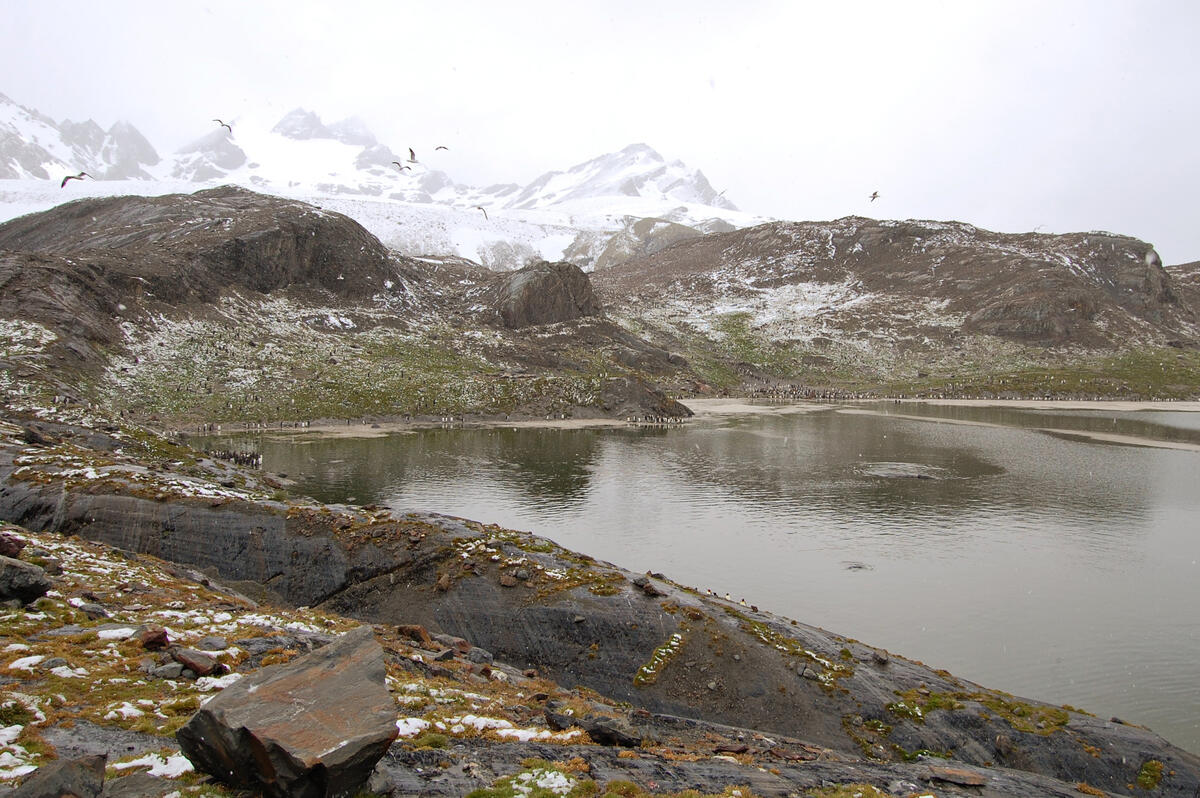
Suited coats and proud postures make it difficult to avoid personifying these birds.
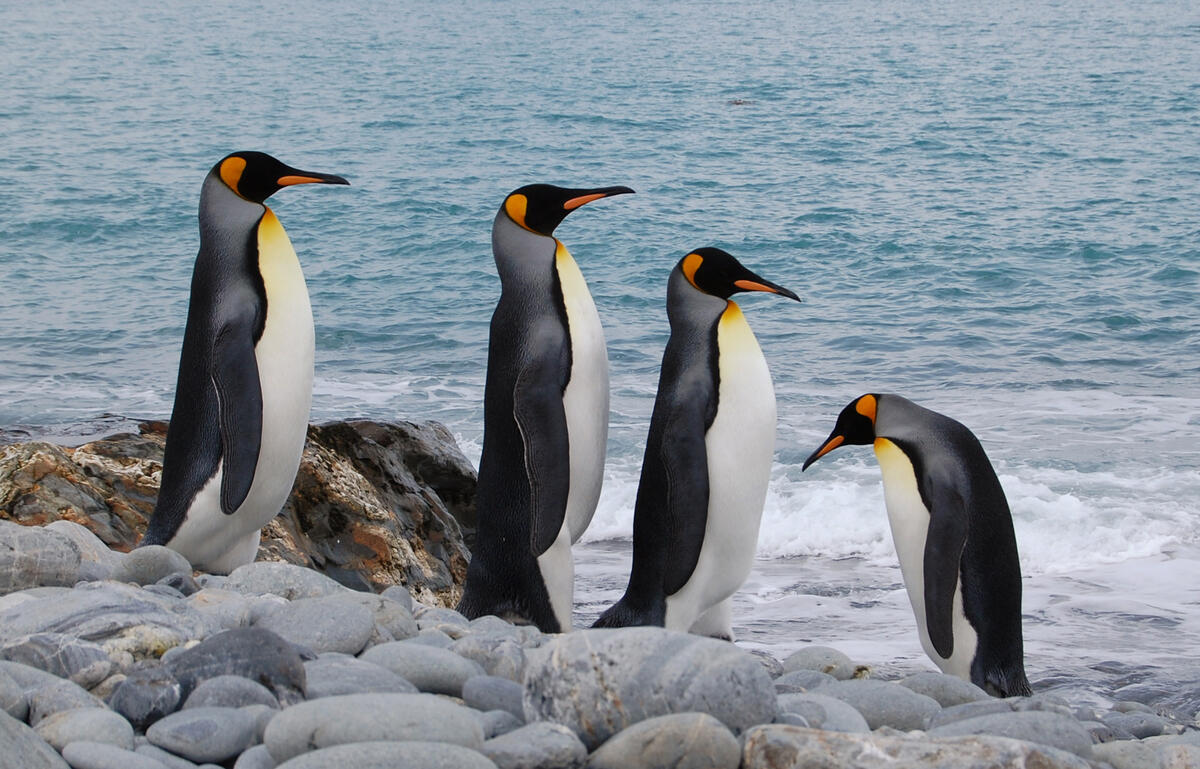
South Georgia is estimated to support a quarter of the world’s two million king penguin breeding pairs. Gold Harbour must go some way to racking up the tally.
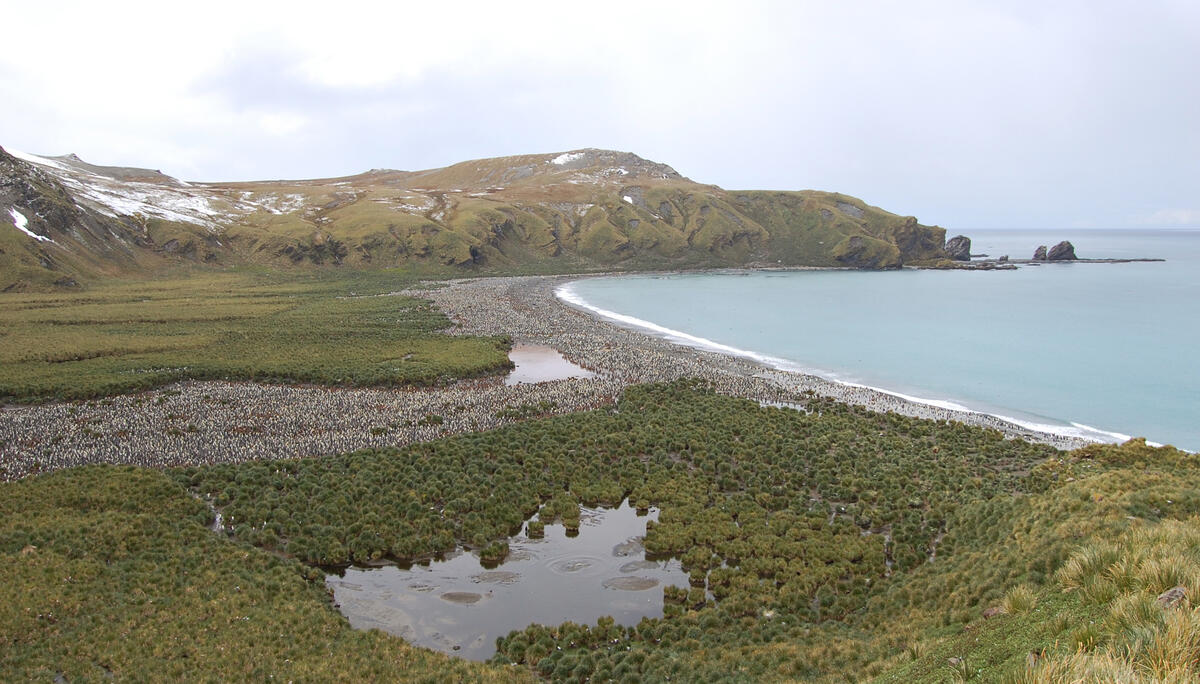
Juveniles, maturing now at about one year old, are at different stages of moulting. The noise, and smell, have to be imagined.
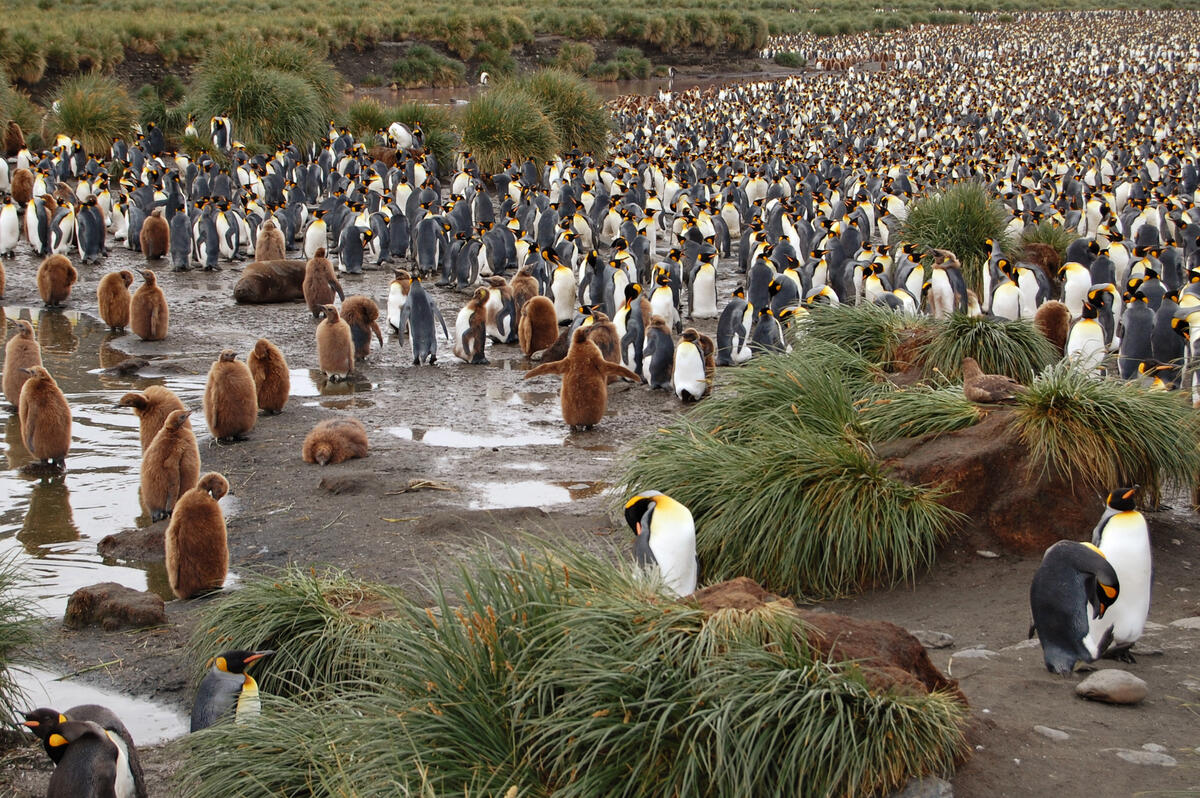
It’s easy to see in certain profiles how it is that these birds swim so well underwater. Consider the hydrodynamics of this body and the powerful propellers of its wings.
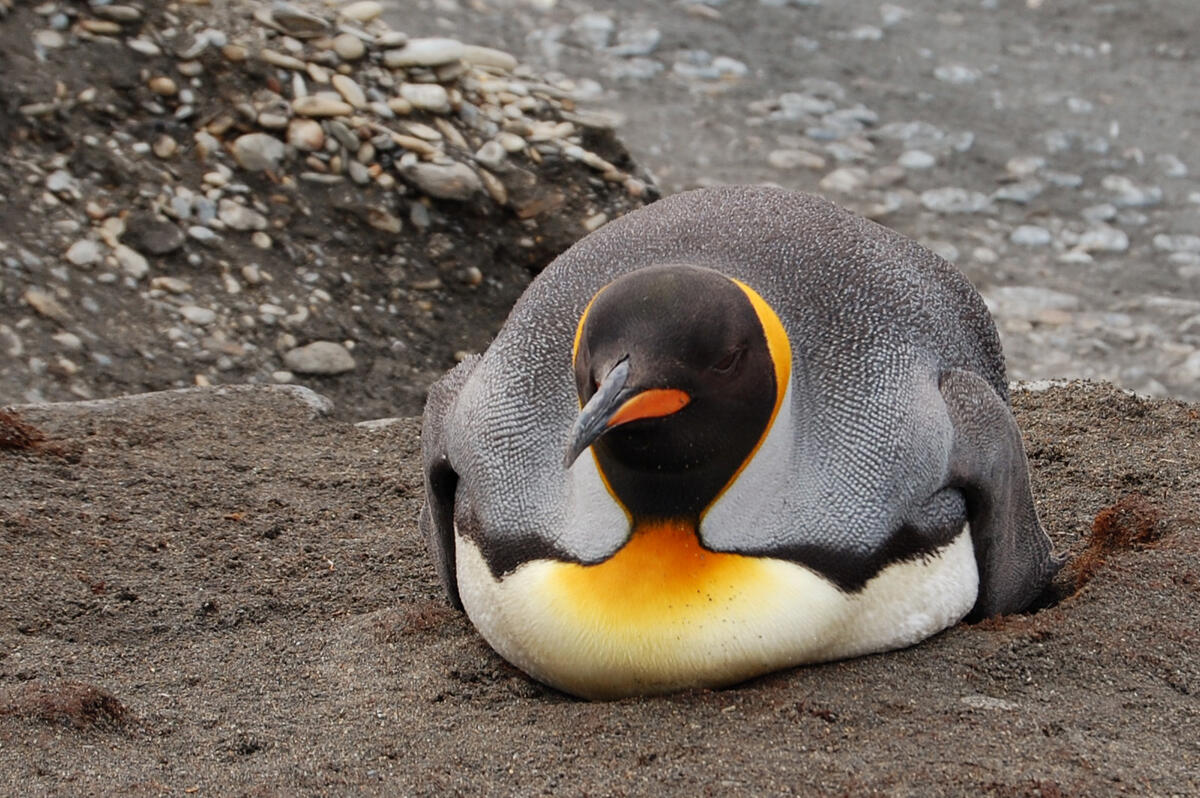
This one had a run in with a leopard or fur seal and came off the worse for wear. We doubt he survived long.
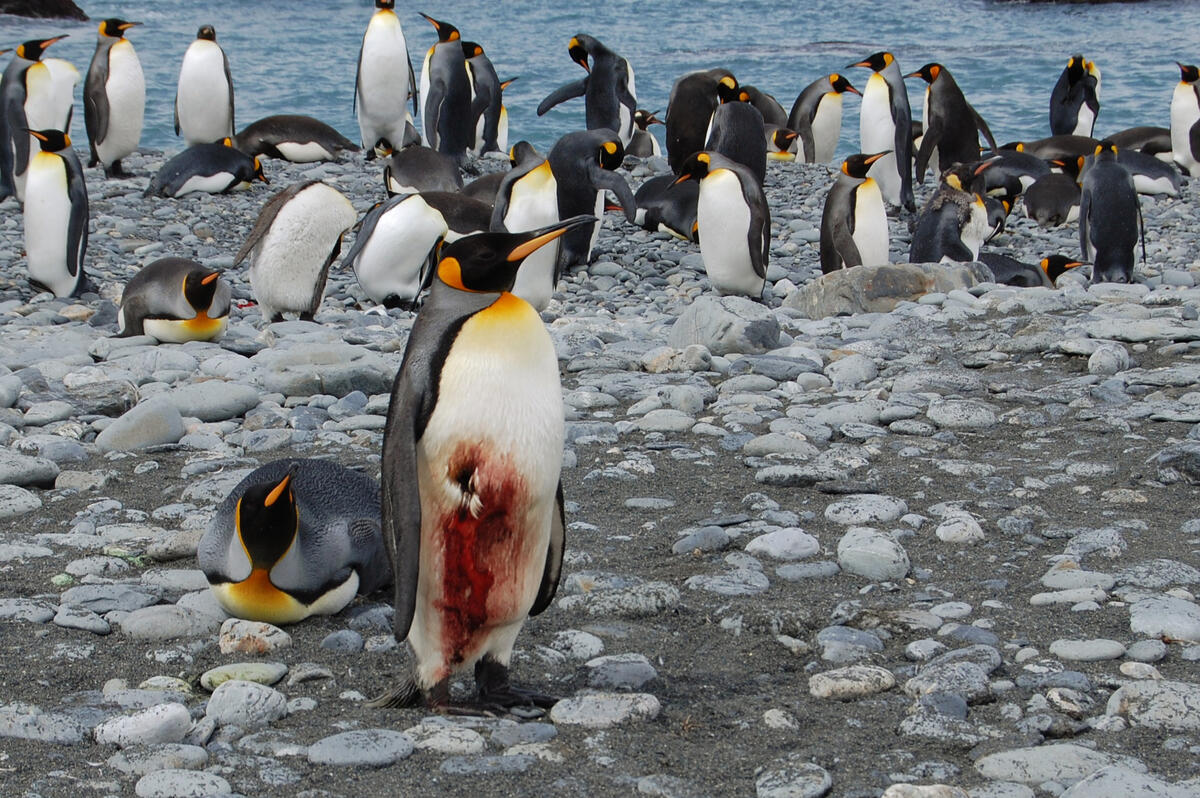
This will be the ultimate beneficiary, a southern giant petrel. They breed in the area too.
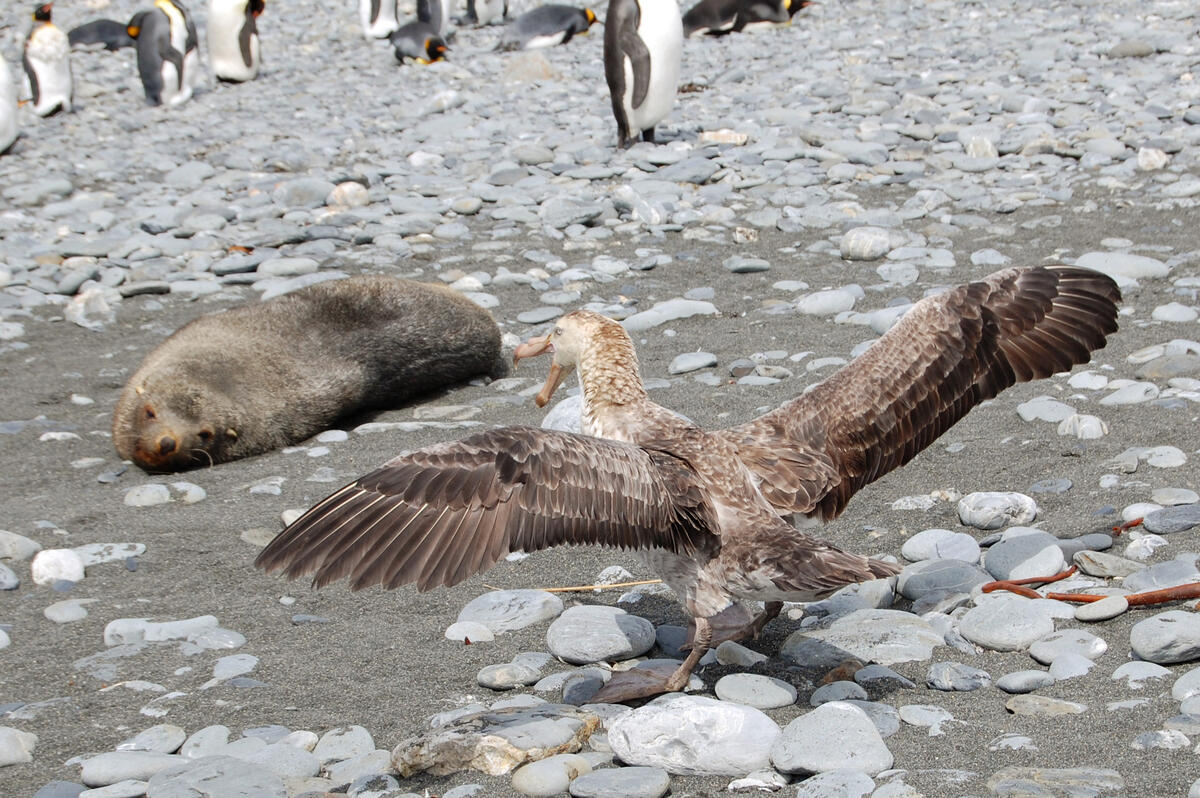
Are penguins, of solipsistic character and flightless ambition, nevertheless capable of contemplation?
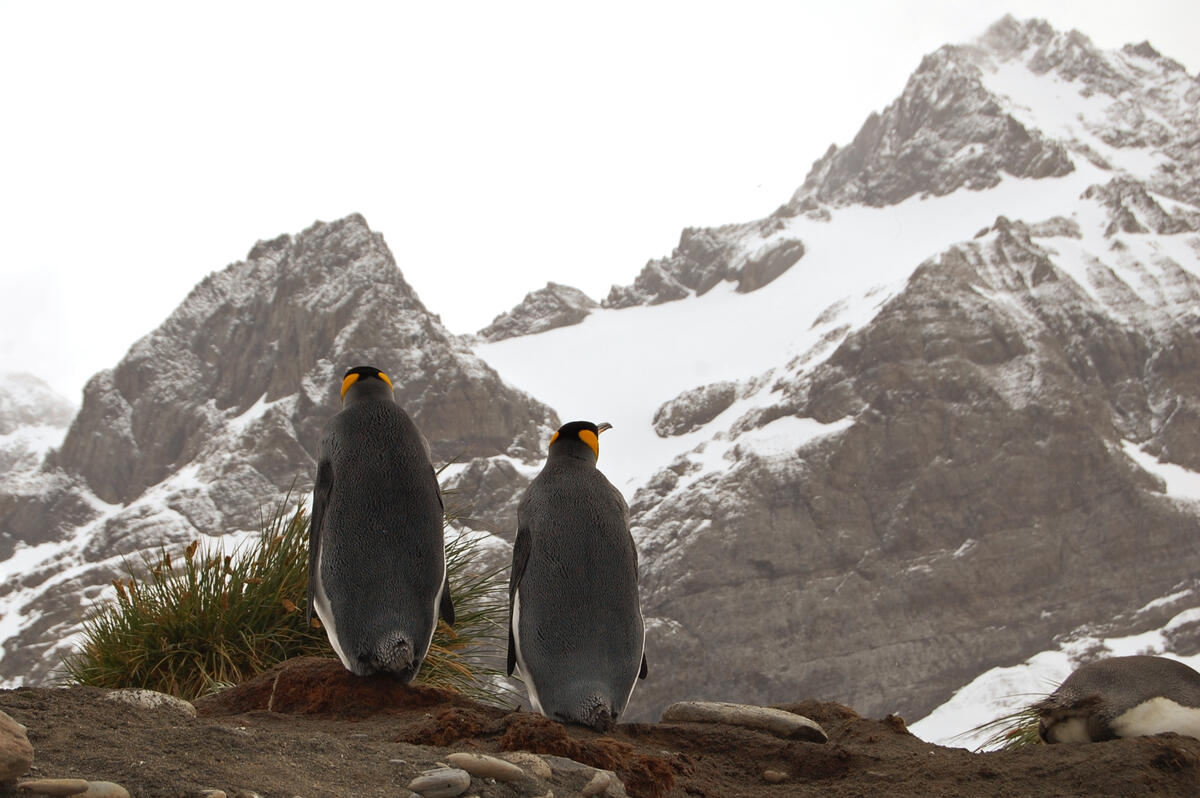
As an onshore breeze began to fill in, it was time to leave Gold Harbour.
